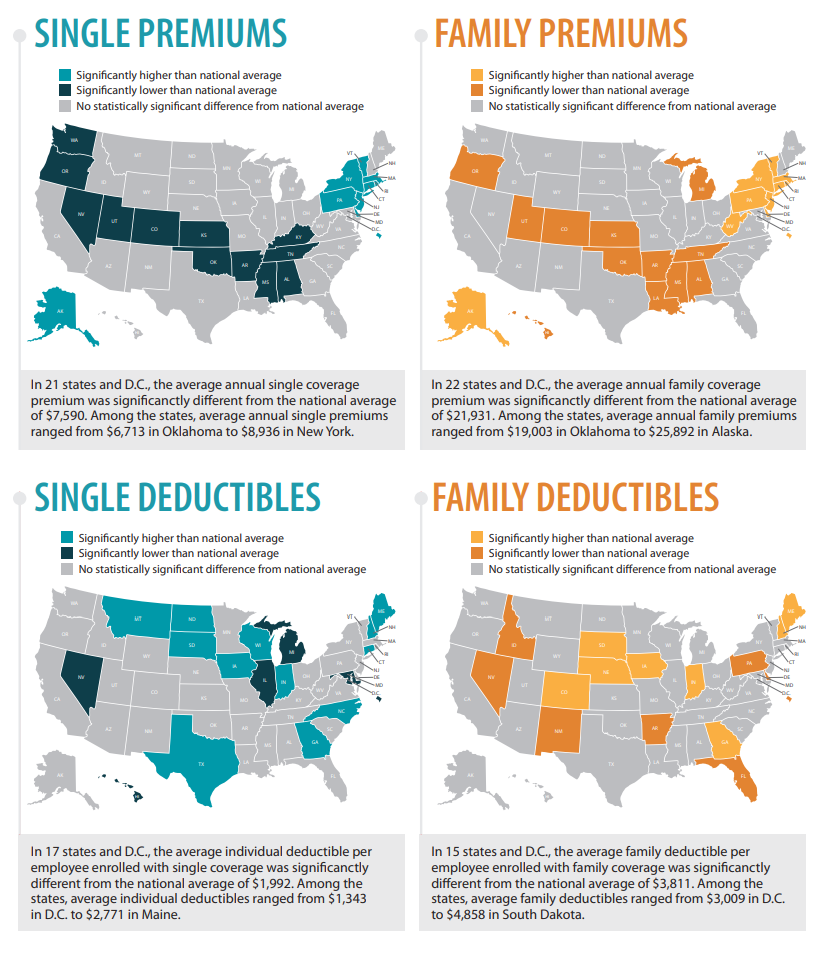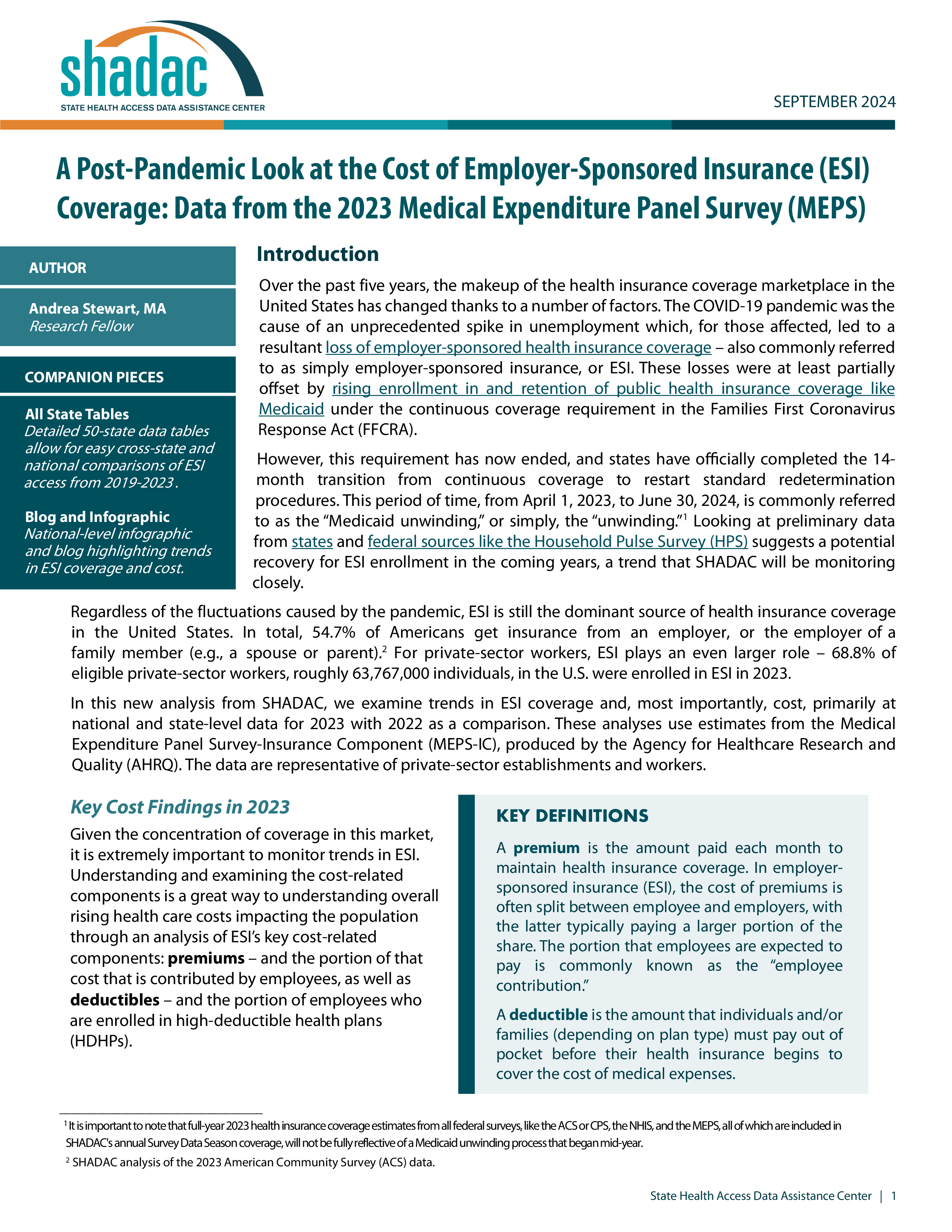Percent of private-sector employees enrolled in high-deductible health insurance plans
Measure Overview
Generate customized graphics using this data by selecting one of the options below.
Related Products

Exploring Cost and Coverage Rates in Employer-Sponsored Insurance (Infographic)
In this blog and accompanying infographic, SHADAC researchers use data from the Medical Expenditure Panel Survey-Insurance Component (MEPS-IC) to analyze private-sector Employer Sponsored Insurance and provide an initial snapshot of estimates for 2022 on a national level and within the states.

A Post-Pandemic Look at the Cost of Employer-Sponsored Insurance (ESI) Coverage: Data from the 2023 Medical Expenditure Panel Survey (MEPS)
Despite pandemic-related decreases, ESI still represents the primary source of health insurance coverage for a majority of the U.S. population (54.7%, or approximately 182.3 million people in 2023). This new report from SHADAC researchers uses estimates from the Medical Expenditure Panel Survey-Insurance Component (MEPS-IC), produced by the Agency for Healthcare Research and Quality (AHRQ), to look at national and state-level ESI data in 2023 with 2022 as a comparison.
